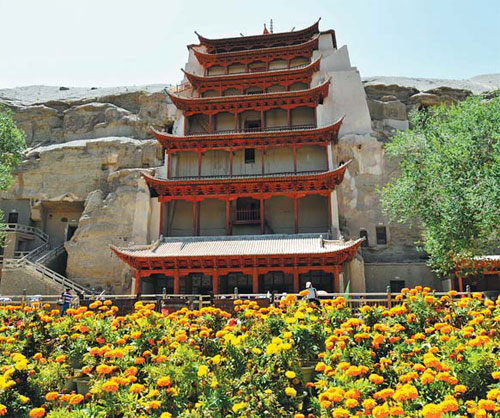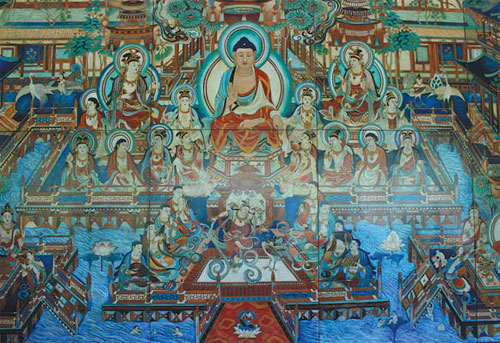Attractions
City has long and colorful history
Updated: 2015-11-25By Li Yang and Xue Chaohua ( China Daily )
The host city of the Silk Road International Cultural Expo next August, Dunhuang is located at the western end of the Hexi Corridor and has a long history of civilization. Its early residents, called Sanmiao, migrated from central China after a defeat in tribal war at the end of primitive society. They hunted and cultivated farmland for a living, and created many cliff paintings.
Constant wars in the region saw ownership change hands between many tribes up until the Han Dynasty (206 BC-AD 220) when the Huns occupied the Hexi Corridor shortly before the Han army reclaimed the area.
It was along the Hexi Corridor that China's silk and advanced technologies spread to Central and Western Asia and Europe, and commodities and plants were brought to China from foreign countries.
Dunhuang became a trade hub and cultural communication center between the East and the West, events that are vividly recorded in the frescoes of the Mogao Caves, which were created more than 1,000 years before the Song Dynasty (960-1279).
After the Ming Dynasty (1368-1644), Dunhuang was occupied by Turpan, a kingdom in today's Xinjiang Uygur autonomous region. In the following 200 years, Dunhuang declined from an oasis to a part of the Gobi Desert.
In the late Qing Dynasty (1644-1911), the Qing army reclaimed the region and moved 2,400 families of farmers from elsewhere in Gansu province to revive Dunhuang's previously prosperous farmland.
Dunhuang was named a national-level famous historic cultural city in 1987 and was upgraded from a county to a city-level administrative region the same year.
Dunhuang has 180,000 permanent residents, and the city covers an area of more than 31,200 square kilometers, of which 4.5 percent is fertile.
Dunhuang has 241 cultural heritage protection sites. The Mogao Caves, Yumen Pass and Xuanquan Spring relics are the most famous. Dunhuang has about 150 hotels offering nearly 20,000 beds for tourists.
The Mogao Caves are also known as the "Thousand Buddha Caves". They are located at the foot of Mingsha Mountain, 25 kilometers southeast of the city center of Dunhuang. The site has 492 caves, 2,415 painted clay sculptures and about 45,000 square meters of frescoes. The Mogao Caves were listed as a World Cultural Heritage site by UNESCO in 1987.
|
The Mogao Caves, also known as the "Thousand Buddha Caves", has 492 caves and 2,415 painted clay sculptures. |
|
A drawing depicts Dunhuang more than 1,000 years ago, when Buddhist arts were booming in this hub of international cultural exchanges. |




